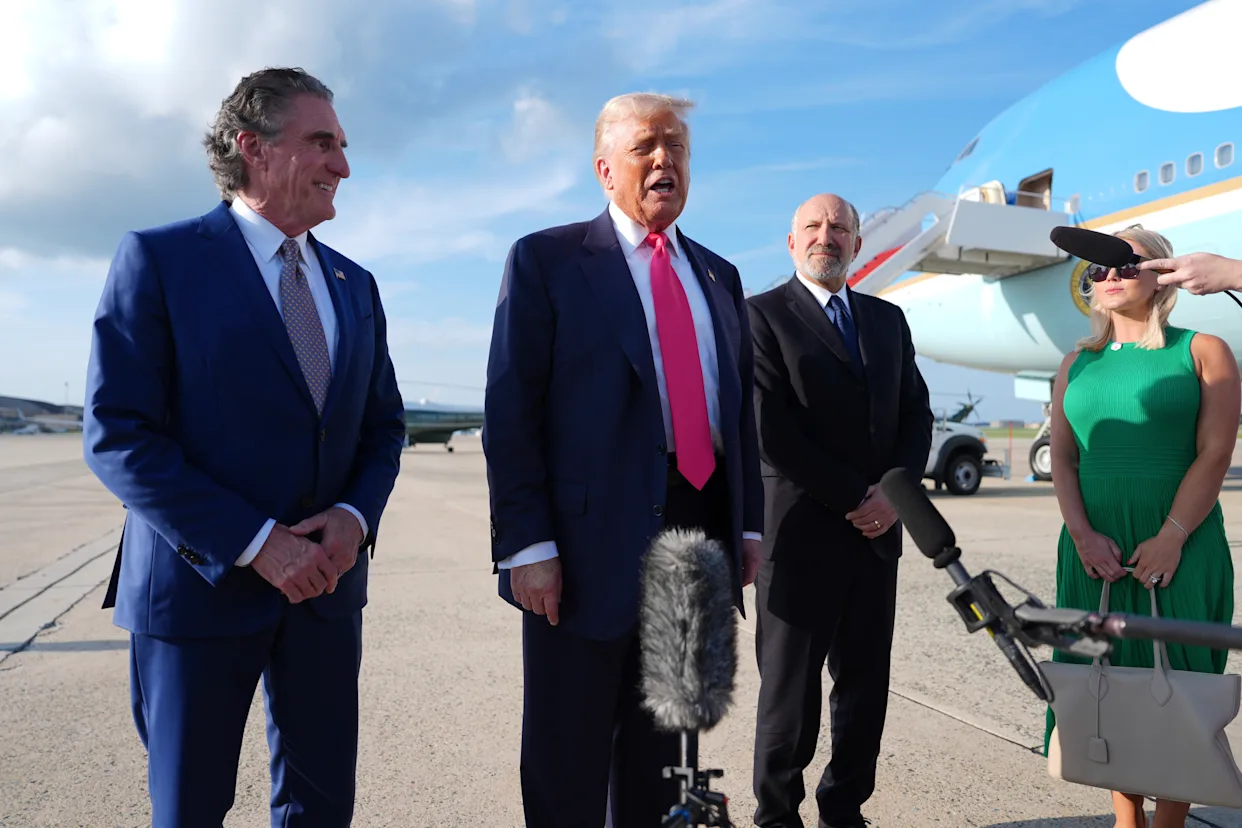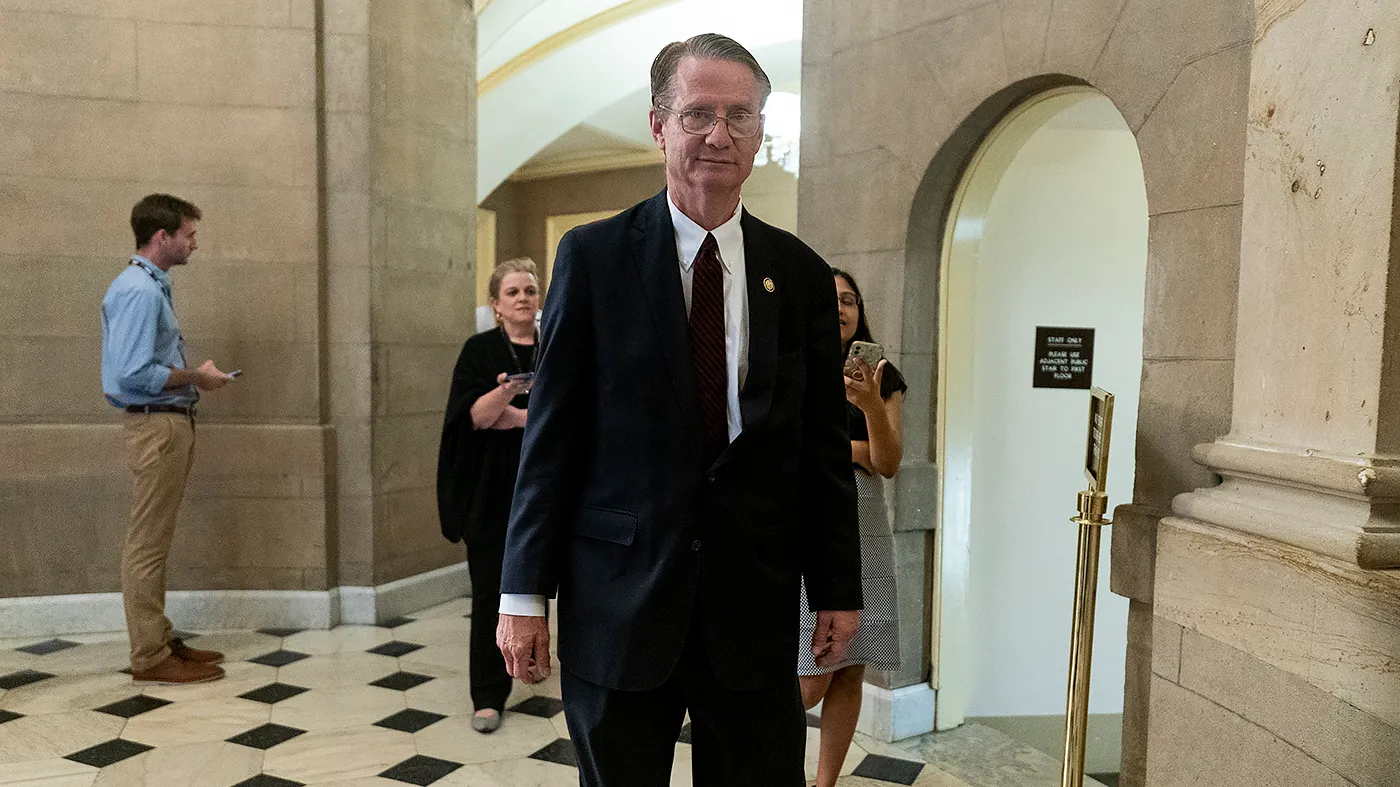Trump Plans New Tariff Wave for Smaller Nations, Likely Above 10%
Trump Plans New Tariff Wave for Smaller Nations, Likely Above 10%
By
David Goldfarb
Last updated:
July 16, 2025
First Published:
August 3, 2025

Photo: Yahoo
Trump to Issue Tariff Notices to Smaller Nations, Likely Setting Rates Above 10%
In a continuation of his hardline trade agenda, former U.S. President Donald Trump announced on Tuesday that his administration will soon issue letters informing several smaller countries of their designated U.S. tariff rates—likely exceeding 10%.
Speaking to reporters after returning from an event in Pittsburgh, Trump reaffirmed his commitment to simplifying trade terms and standardizing tariffs across a wide array of nations.
“We’ll be releasing a letter soon, talking about many countries that are much smaller,” Trump stated. “We’ll probably set one tariff for all of them ... probably a little over 10%.”
Blanket Tariff Deals Already in Motion
Trump touted what he called “simple deals” that his team has already locked in with more than 20 countries. These agreements set uniform tariff rates—a significant departure from more complex bilateral negotiations that have historically shaped U.S. trade relations.
The strategy behind these blanket deals, according to trade analysts, is aimed at boosting American competitiveness by discouraging imports and encouraging domestic production. While this might benefit some U.S. industries, critics warn of potential price hikes for consumers and retaliatory tariffs from affected nations.
Why Smaller Countries Are the Next Target
Smaller economies often rely heavily on access to the U.S. market. By applying a one-size-fits-all tariff—likely just above 10%—Trump aims to exert economic pressure while reducing administrative complexity. Countries that export low-cost goods, including textiles, electronics, and basic manufactured items, could be particularly impacted.
This latest move comes amid a broader effort by Trump to realign global trade in favor of American industry. His previous trade actions included a 60% tariff proposal on Chinese imports, steep duties on steel and aluminum from various allies, and threats to exit long-standing trade pacts unless they were renegotiated.
What This Means for Global Trade
If implemented, this new tariff structure could shift trade flows significantly:
- Export-reliant nations such as Bangladesh, Vietnam, and parts of Latin America may face economic headwinds as their goods become more expensive in the U.S. market.
- U.S. importers may have to absorb the higher costs or pass them on to consumers.
- Multinational companies may accelerate shifts in supply chains, relocating operations to avoid high tariff zones.
Global financial institutions have previously warned that broad tariff applications risk slowing global growth. According to the World Trade Organization (WTO), global trade volume fell by 1.2% in 2023, with tariff tensions playing a key role.
Final Word: More Than Just a Letter
While the letters Trump referenced are symbolic, they represent a continuation of a larger ideological stance—America First—that prioritizes domestic production and challenges the norms of free trade.
If re-elected, Trump’s proposed tariffs could have a profound and lasting impact on global supply chains, U.S. consumer prices, and diplomatic relations, particularly with emerging economies that have come to depend on U.S. market access.
Popular articles
Subscribe to unlock premium content
Bolivia How Lithium Mining Policies Are Positioning It as the Next Global EV Battery Hub

Naval Ravikant The Angel Investments That Quietly Made Him a Multimillionaire

Rising From the Rubble Lessons From Billionaires Who Failed 10 Times Before Success

Bolivia How Lithium Mining Policies Are Positioning It as the Next Global EV Battery Hub

Naval Ravikant The Angel Investments That Quietly Made Him a Multimillionaire

Bolivia How Lithium Mining Policies Are Positioning It as the Next Global EV Battery Hub









